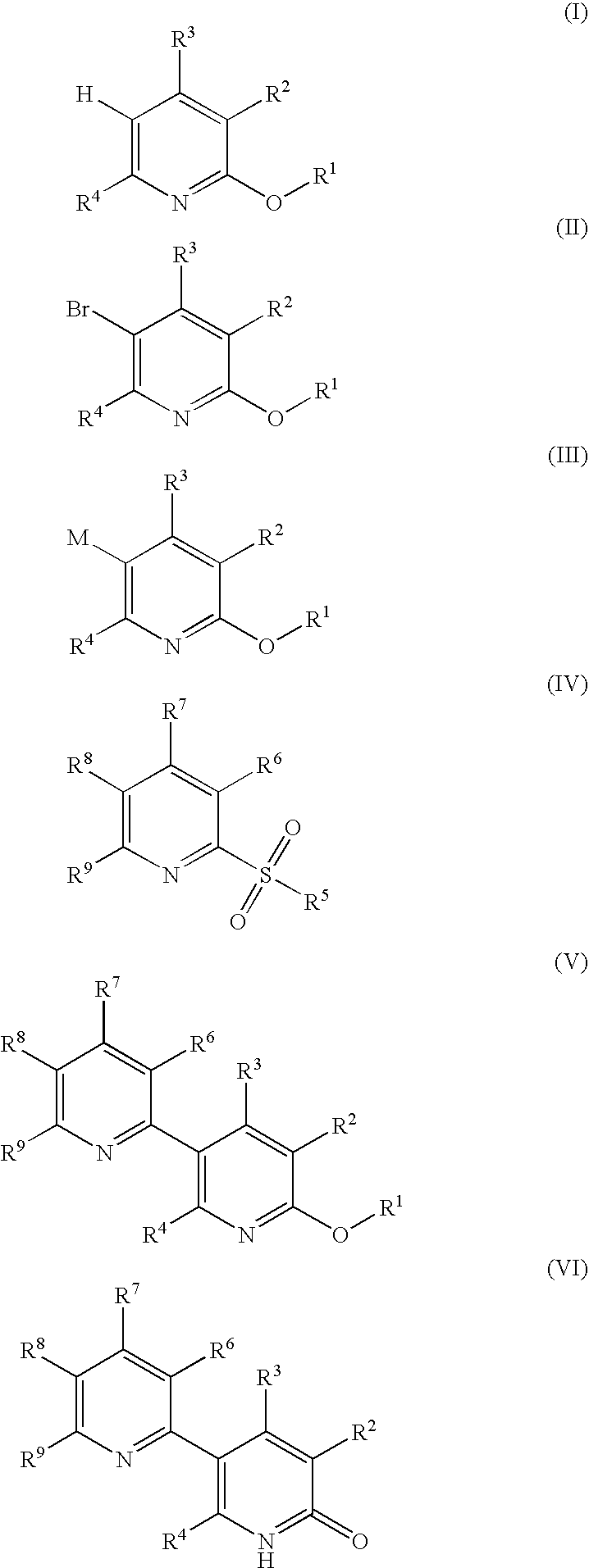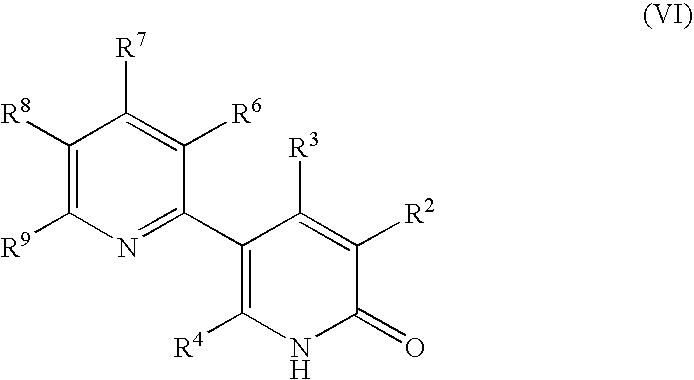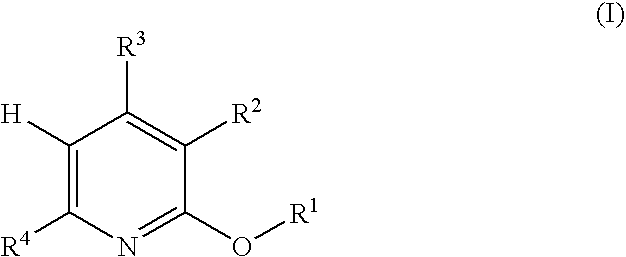Process for producing 5-(2'-pyridyl)-2-pyridone derivative
a technology of pyridyl and pyridyl, which is applied in the field of production method of 5(2′pyridyl)2pyridone derivative, can solve the problems of increasing cost and inability to be employed industrially
- Summary
- Abstract
- Description
- Claims
- Application Information
AI Technical Summary
Benefits of technology
Problems solved by technology
Method used
Image
Examples
example 1
Synthesis of 5-bromo-2-methoxypyridine
[0059]Ethyl acetate (325 kg), sodium acetate (58 kg, 707 mol) and 2-methoxypyridine (68.7 kg, 630 mol) were mixed in a reactor vessel (inner volume 1000 L). To this solution was added dropwise bromine (122.3 kg, 765 mol) over 6.5 hr while keeping the inside temperature from exceeding 10° C. After the dropwise addition, the inside temperature was raised to 20° C. and the mixture was stirred for 5 hr. The ratio of reaction progress at this time point was 73%. Thereafter, the inside temperature was raised to 50° C. and the reaction was continued more for 5 hr. The ratio of reaction progress at this time point was 98%. The reaction mixture was cooled and water (70 kg) was added to the reaction mixture. While keeping the inside temperature from exceeding 5° C., the solution obtained by dissolving sodium hydroxide (46.1 kg) and sodium sulfite (17 kg) in water (200 kg) was added dropwise. The reaction mixture was stood still to allow partitioning. Afte...
example 2
Synthesis of 6-methoxy-3,2′-bipyridine
[0061]Tetrahydrofuran (230 kg) was charged in a reactor vessel (inner volume 1000 L) and cooled to −76° C., after which a solution (15.2 wt %, 118 kg, 278 mol) of n-butyllithium in hexane was added therein. To this solution was added dropwise a solution obtained by dissolving 5-bromo-2-methoxypyridine (47.0 kg, 250 mol) in tetrahydrofuran (71 kg) over 3.5 hr at an inside temperature of −71° C. to −75° C. After the completion of the dropwise addition, the mixture was stirred for 1 hr and a sample was taken to confirm the disappearance of 5-bromo-2-methoxypyridine. To the obtained reaction mixture was added dropwise a solution obtained by dissolving 2-benzenesulfonylpyridine (45.7 kg, 209 mol) in tetrahydrofuran (133 kg) at a temperature range of −71° C. to −75° C. over 6.5 hr. After the completion of the dropwise addition, the mixture was stirred at −71° C. for 3 hr and isopropanol (32 kg) was added to stop the reaction.
[0062]The obtained reactio...
example 3
Synthesis of 5-(2′-pyridyl)-2-pyridone
[0064]Crude 6-methoxy-3,2′-bipyridine (55.0 kg, net: 42.6 kg) obtained in Example 2, 35% hydrochloric acid (65 kg) and water (110 kg) were charged in a reactor vessel (inner volume 500 L) and the mixture was heated under reflux for 4 hr. The reaction mixture was cooled and the aqueous layer was washed with methyl-tert-butyl ether (116 kg×4). A solution obtained by dissolving sodium hydroxide (35 kg) in water (102 kg) was added while maintaining the inside temperature at 25-35° C. to adjust its pH to 12, and the aqueous layer was washed again with methyl-tert-butyl ether (116 kg×2). 35% Hydrochloric acid (40 kg) was added while maintaining the inside temperature at 25-40° C. to adjust its pH to 7. This mixture was transferred to a reactor vessel (inner volume 1000 L), n-butanol (175 kg) was added and sodium chloride (70 kg) was further added. The organic layer was separated and the aqueous layer was extracted with n-butanol (175 kg). The extract ...
PUM
| Property | Measurement | Unit |
|---|---|---|
| temperature | aaaaa | aaaaa |
| time | aaaaa | aaaaa |
| inner volume | aaaaa | aaaaa |
Abstract
Description
Claims
Application Information
 Login to View More
Login to View More - R&D
- Intellectual Property
- Life Sciences
- Materials
- Tech Scout
- Unparalleled Data Quality
- Higher Quality Content
- 60% Fewer Hallucinations
Browse by: Latest US Patents, China's latest patents, Technical Efficacy Thesaurus, Application Domain, Technology Topic, Popular Technical Reports.
© 2025 PatSnap. All rights reserved.Legal|Privacy policy|Modern Slavery Act Transparency Statement|Sitemap|About US| Contact US: help@patsnap.com



